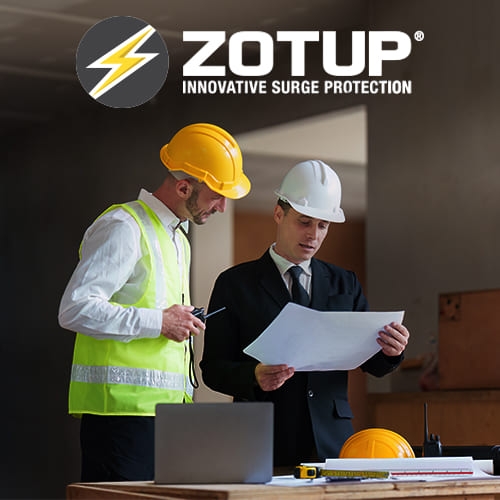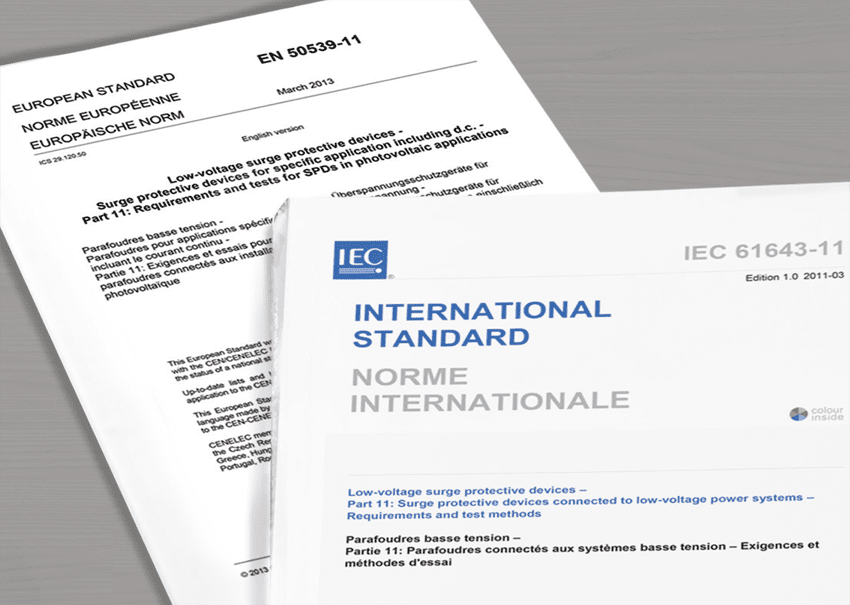THE REGULATIONS ON THE BASIS OF SURGE ARRESTERS

The increasing use of electrical or electronic equipment has generated greater interest in atmospheric overvoltages and overvoltages due to electrical maneuvers. The awareness that overvoltages and overcurrents pose a risk factor for various electrical installations has increased interest among several scholars.
In this regard, jurists have committed themselves and drafted national and international reference standards that are constantly evolving.
Evolution of the Reference Standards
In October 1984, the first edition of the CEI 81-1 standard "Protection of Structures Against Lightning" was published, introducing in Appendix G the first method for evaluating the possible need to adopt protection measures. The evaluation was limited to calculating the number of lightning strikes that could potentially hit the structure under examination, comparing it with a defined tolerable value.
To date, two standards in particular regulate the application of solutions for protection against atmospheric overvoltages: EN 62305 and CEI 81-10.

In 2006, CEI published the first edition of the EN 62305 series of standards, consisting of four booklets:
· CEI EN 62305-1 "General Principles", which indicated the general principles underlying the protection against lightning of structures, installations, and people.
· CEI EN 62305-2 "Risk Assessment", regarding the risk assessment due to ground lightning, with the aim of providing the procedure for determining said risk.
· CEI EN 62305-3 "Physical Damage to Structures and Life Hazard", which defined the requirements for adopting a lightning protection system that prevents material damage and danger to people.
· CEI EN 62305-4 "Electrical and Electronic Systems in Structures", which provided elements on the design, installation, maintenance, and verification of protection measures for internal electrical and electronic systems to reduce the risk of permanent damage due to the electromagnetic pulse (LEMP) associated with lightning.
In 2013, CEI published the second edition, still in force, of the EN 62305 standard.
The Most Important Concepts in the Regulations
The standard clearly defines and identifies all concepts related to lightning protection and risk assessment. Therefore, lightning protection (LP-lightning protection) is achieved through: a lightning protection system (LPS) and appropriate protection measures against electrical discharges (SPM).
Specifically, ground lightning is defined as an electrical discharge between cloud and ground. The discharge does not occur spontaneously but progressively. Lightning that strikes a structure can cause damage: to the structure itself, its occupants, or the internal systems of a given structure. Depending on the characteristics of the structure and the lightning, it is possible for the damage to extend near the structure or even throughout the surrounding environment.
Moreover, the risk assessment is the most important element of the lightning protection system design procedures. The procedure is structured as follows:
· risk assessment;
· comparison with the tolerable risk;
· selection and adoption, if necessary, of adequate lightning protection to reduce the risk.
The factors that can influence the risk are:
· the number of lightning strikes affecting a structure or its surroundings;
· the probability that each lightning strike is capable of causing damage, depending on whether appropriate lightning protection is adopted;
· the extent of the loss due to lightning damage.
A successful risk assessment requires information gathering prior to starting the procedure:
· the environmental characteristics and lightning density in the area where the structure and incoming lines are located;
· the characteristics of the structure, installations, incoming lines, and equipment (and their respective impulse withstand voltages);
· the economic and social amount of the losses, the environmental impact of the damages, and the cost of repairs.
Ultimately, according to standard 81-10, a careful analysis of atmospheric overvoltages must necessarily consider the cause of the damage (lightning on the structure; lightning near the structure; lightning on the incoming lines and lightning near the incoming lines); the type of damage (damage to living beings due to electrocution; fire, explosions, chemical effects, mechanical destruction, and other material damage; failure or malfunction of electrical systems due to overvoltages) and the type of loss (loss of human lives; loss of public services; loss of cultural heritage; loss of economic value).
ZOTUP and Surge Protection Solutions
The aforementioned standard requires the adoption of protection systems for electrical and electronic equipment that limit the effects of overvoltages within a structure. These protection systems are surge arresters. They protect electrical installations from overvoltages, surges, or electricity spikes caused by the utility provider or atmospheric phenomena.
They are also known as SPD - Surge Protection Devices and are characterized by two main advantages: they are an economical solution (especially when compared to the economic damages incurred in their absence) and can be installed later in an existing system. The functioning of the system is not modified as the device acts as an energy container. In the event of electrical anomalies, the surge arrester immediately diverts the excess energy to the ground.
ZOTUP is an Italian company excelling in the design and production of SPD based on simple but fundamental values such as safety, high quality, and innovation. The company proposes safety measures within infrastructures, buildings, and installations to ensure that electrical and electronic equipment are not damaged and can guarantee efficient performance even in the presence of interferences.

 Deutsch
Deutsch
 Français
Français
 Italiano
Italiano